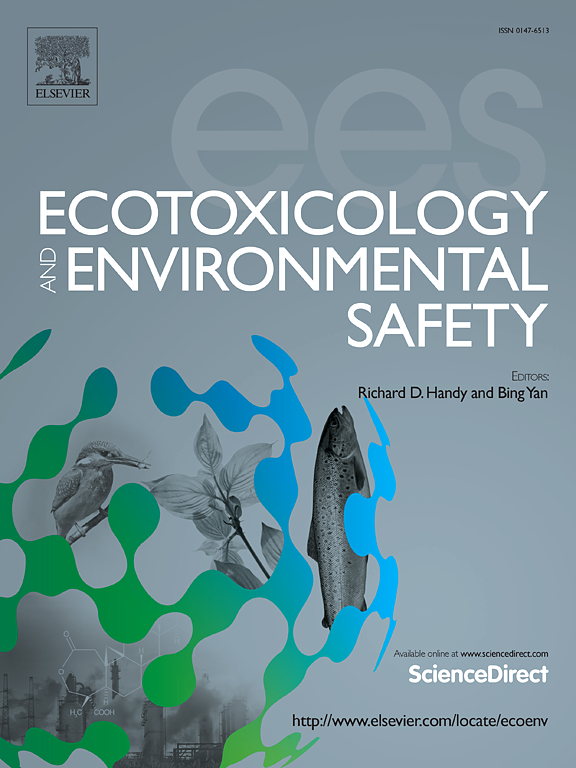The role of xylene as a nematicide formulation and its synergistic effects with abamectin in the management of pine wood nematodes
IF 6.2
2区 环境科学与生态学
Q1 ENVIRONMENTAL SCIENCES
引用次数: 0
Abstract
Pine wilt disease (PWD), caused by the pine wood nematode, poses a significant global threat to forests, resulting in severe economic and environmental damage. Currently, managing the occurrence of PWD in plants remains an ongoing challenge due to its multiple modes of transmission and broad adaptability. Moreover, there are only a few nematicidal agents for controlling these harmful nematodes. Therefore, the identification of novel nematicidal agents has become urgent and is of critical practical and economic significance. This study aimed to evaluate xylene as a supplementary agent in managing pine wood nematodes. The nematicidal efficacy of xylene was assessed, revealing that it effectively suppresses the growth, reproduction, and behavior of Bursaphelenchus xylophilus at certain concentrations. Notably, the combination of xylene and abamectin achieved a 100 % mortality rate at a significantly lower concentration of 0.5 µg/mL, approximately eight times less than abamectin alone. In pot experiments, xylene treatment did not exhibit phytotoxicity towards pine trees, confirming its nematicidal activity. Furthermore, the xylene-abamectin combination effectively inhibited the development of PWD in 5-year-old Pinus densiflora trees at a dosage of 0.45 mg per tree, roughly 8 times lower than the required amount of abamectin alone under greenhouse conditions. This study is the first to demonstrate the nematicidal effects of xylene, suggesting that xylene could serve as an effective agent in nematode control formulations.
求助全文
约1分钟内获得全文
求助全文
来源期刊
CiteScore
12.10
自引率
5.90%
发文量
1234
审稿时长
88 days
期刊介绍:
Ecotoxicology and Environmental Safety is a multi-disciplinary journal that focuses on understanding the exposure and effects of environmental contamination on organisms including human health. The scope of the journal covers three main themes. The topics within these themes, indicated below, include (but are not limited to) the following: Ecotoxicology、Environmental Chemistry、Environmental Safety etc.

 求助内容:
求助内容: 应助结果提醒方式:
应助结果提醒方式:


